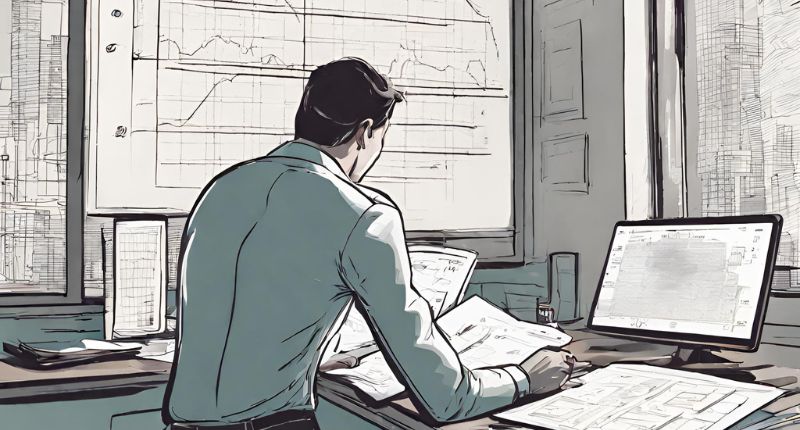
- Australian property prices to grow by one per cent to four per cent in 2024.
- Affordability woes will continue to see first-home buying subdued.
- Upgrade buyers dominate the market, propping up prices.
The recovery of home prices is predicted to continue into 2024, but at a slower pace than this year, according to PropTrack’s Property Market Outlook Report December 2023.
At the start of this year, PropTrack analysts forecasted that national home prices would fall.
This made sense, with interest rates rising swiftly and borrowing capacities consequently reduced; the argument was that houses would become too costly, freeing up supply and causing prices to adjust.
However, this prediction did not come to pass. As of November 2023, prices grew by 5.5% year-to-date. Sales volumes rebounded strongly from the start of 2023, and buyer activity intensified. Hence, prices spiralled, with supply failing to keep pace with elevated demand.
Quarterly and annual change in national home prices

“Australia’s property market proved resilient in 2023. Home prices have increased 5.5% so far this year to a record high, despite deteriorating housing affordability and interest rate rises significantly reducing borrowing capacities,” said PropTrack director of economic research and report author, Cameron Kusher.
“Nationally, we expect prices to grow between 1% and 4% in 2024. We expect that a combination of continued strong demand and limited new housing construction will contribute to price gains, albeit at a slower pace than what we experienced this year.”
Cameron Kusher, PropTrack
“Stage three tax cuts will commence in July, which will benefit higher income earners, and in turn, could lead to increased demand for higher priced housing.”
Accordingly, here are three trends that will shape the housing market in 2024:
- First home buyers to continue suffering
- Home upgrades will sustain the higher prices
- A slowdown in price growth cushioned by tight rental markets
1. First-home buyers will continue to suffer
The repeated interest rate hikes that occurred from 2022 to date have largely pushed first-home buyers out of the market due to worsened affordability. There were 30% fewer first-home buyers, and this trend has continued into 2023, with the first-home buying activity still subdued.
New first-home buyer loans

PropTrack’s latest report forecasts the national property prices rising somewhere between 1% to 4%. Thus, affordability is expected to worsen in the short term.
Furthermore, based on the Reserve Bank of Australia’s (RBA) latest forecast, interest rates are unlikely to decrease any time soon.
On the other hand, wages have been rising at their fastest rate in over a decade, propped up by the labour shortage. Though higher incomes will mitigate some of the effects of the heightened mortgage costs, it will be an incremental process.
2. Home upgrades will sustain higher prices
Upgrading buyers will majorly influence housing prices in the coming year. Buyers with hefty deposits were a big reason why prices in 2023 were unwavering despite the inflationary environment.
Through 2023, buyers with larger deposits were responsible for an increasing proportion of lending. This was most pronounced in owner-occupiers. Around a third of new lending has been attributed to owner-occupiers borrowing under 60% of their home value, a share that has doubled since the middle of the pandemic.
Buyers with large deposits

Investor high-deposit lending has grown to over 25% of new lending. Although this partially reflected heightened refinancing activity, a sizeable chunk of the market comprised upgrade buyers capitalising on the substantial equity boosts they enjoyed from the pandemic boom, where prices catapulted by 36% since early 2020.
Buyers wielding large deposits will continue to dominate the market in 2024, supporting elevated prices despite the high-interest rate environment.
3. Slowdown in price growth cushioned by tight rental markets
Australia’s rental market suffered large setbacks this year, with national and state vacancy rates perpetually breaking new lows, proving to be one of the major foils to the interest rate hikes, and the strongest contributors to home price growth.
National residential vacancy rates
The rental market’s tightness mirrors the nation’s housing scarcity. As vacancy rates remain at record lows, weekly rents continue to spiral.
National weekly asking rents
Without a surge in rental availability, which will not happen soon, rising rental prices will remain a reality in 2024.
On a positive note, the rental market is unlikely to worsen at the same rate as in 2023.
The poor conditions in the rental market will have incentivised those with the means to buy homes earlier than intended.
Additionally, tight rental markets and robust rental price growth will lure investor activity. While this will further constrain the stock for sale, it will provide more rentals in the market.







